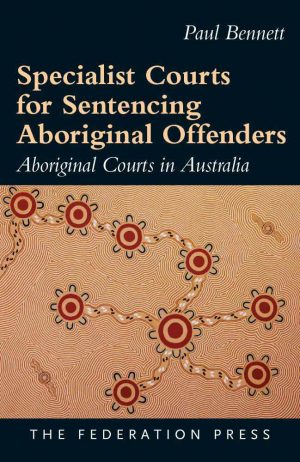Prominent criminologist David Garland has argued that VISs have led us into ‘unfamiliar territory where the ideological grounds are far from clear and the old assumptions an unreliable guide’.
A victim impact statement (VIS) is a highly nuanced and individual narrative that can operate as both an informational device in the sentencing process and an expressive mechanism for crime victims. From the law perspective, VISs provide the court with details of harm caused by the offence and the consequences of the offending in order to further purposes of sentencing. As an expressive mechanism, VISs offer victims the opportunity and space to express their feelings, tell their personal story of the aftermath of crime, and be heard by the court, the offender, and the wider community.
Though a well-established feature of contemporary sentencing hearings (at least in superior courts) VISs remain controversial in common law jurisdictions. The ‘non-legal’ nature of VISs has generated uncertainty in relation to the functioning of the sentencing hearing and concerns have been raised that VISs are: inconsistent with established legal values, detrimental to the offender’s entitlement to a fair hearing, detrimental to victims’ wellbeing, and harmful to the integrity of the legal proceedings.
Accommodating Justice: Victim Impact Statements in the Sentencing Process explores the complex territory where VISs, the law and legal institutions intersect with a focus on the requirements of fairness, most particularly in the courtroom. And it does so from multiple perspectives: courts, offenders and victims. The book draws from a range of theoretical and doctrinal sources as well as empirical studies from Australia, Canada, the United States and the United Kingdom. An ethnographic study of the performance of VISs in homicide sentencing hearings in the NSW Supreme Court woven through most chapters provides an innovative and evidence-based approach to the issues.
Foreword by Emeritus Professor David Brown
Acknowledgments
Introduction
1: A Victim Impact Statement
1.1 Who can submit a victim impact statement?
1.2 What form does a victim impact statement take?
1.2.1 Written form
1.2.2 Oral form
1.2.3 Victim impact videos/DVDs
1.3 What is a victim impact statement about?
1.3.1 Legislative constraints
1.3.2 Case study: A narrative analysis of victim impact statements
1.4 What is the purpose of a victim impact statement?
1.4.1 Instrumental
1.4.2 Expressive
2: The Use of Victim Impact Statements in the Determination of Penalty
2.1 Overview of the sentencing hearing
2.2 The relevance of victim impact statements to the determination of penalty
2.2.1 A cautious approach by the courts
2.2.2 Evidence of aggravating factors
2.2.3 Evidence of mitigating factors
2.3 The use of victim impact statements as evidence in homicide matters
2.3.1 Intrinsic harm
2.3.2 Aggravation
2.3.3 Change of law in New South Wales in homicide matters
3: The Expressive Function of Victim Impact Statements
3.1 Voice
3.2 The restorative aspect of victim impact statements
3.3 The therapeutic aspects of victim impact statements
3.4 Victim impact statements in the courtroom
3.4.1 Production of the sentencing hearings
3.4.2 Performance
3.4.3 Offender remorse
4: Victim Impact Statements and the Integrity of the Legal Proceedings
4.1 Theoretical incompatibility between victim impact statements and the adversarial sentencing hearing
4.2 Law, legal processes and the emotionality of victim impact statements
4.2.1 The intersection between laws, legal processes and emotion
4.2.2 Courtroom ambience and proceedings
4.2.3 Appropriateness of emotionality in the courtroom
4.3 Management of victim impact statements and emotionality in the courtroom
4.3.1 Case study: Managing the emotionality of victim impact statements in the courtroom
5: Victim Impact Statements and the Offender’s Entitlement to a Fair Hearing
5.1 Victim impact statements as evidence of harm
5.1.1 The probative value of victim impact statements
5.1.2 The prejudicial nature of victim impact statements
5.2 Challenging victim impact statements
5.2.1 Cross-examination
5.2.2 Objection
5.3 Relying on the sentencing judge
5.4 The impact of victim impact statements on penalty
5.4.1 Victim impact statements and disparity
5.4.2 The research findings
6: Victims and the Contentious Nature of Victim Impact Statements
6.1 To speak
6.1.1 ‘In your own words’
6.1.2 Constraints
6.1.3 Presenting a victim impact statement
6.1.4 The significance of form
6.2 To be heard
6.2.1 Heard by the court
6.2.2 Heard by the offender
6.3 Victim wellbeing
7: Conclusion
Bibliography
Index
This book offers a comprehensive study of the victim impact statement in contemporary criminal law. With victim impact statements becoming more and more prevalent in the past few decades, it is a useful and important text.
On one hand, giving voice to the victims of crime might be understood as an important facet of the criminal justice system. On the other, the victim impact statement might be characterised as a dangerously emotive element in the sentencing process; victims’ rights discourse being driven by “tough on crime” agendas and the hysterical rhetoric which feeds them. Booth’s book charts a course through these polarised views with moderate and considered analysis.
The book is thoroughly researched, well structured and accessible. The author cogently covers the procedural and substantive issues which arise in the use of victim impact statements. The book draws together previous academic writing as well as the author’s own qualitative research. Later chapters are also devoted to the “offender’s entitlement to a fair hearing” in this context, as well as the “contentious nature of victim impact statements”. Accommodating Justice is essential reading for all those who practise in criminal law.
Adam Chernok, InPrint, Law Institute Journal Victoria, Jan/Feb 2017
This book occupies a vital place in the developing story of victim impact statements (VISs) in Australia and elsewhere, adding to the existing literature in new, informative and challenging ways. On this important subject it will be an essential reference for criminal justice academics, practitioners, policy makers and legislators. …
After 15 more years of development, VISs still create problems of principle and in practice and reading this book demonstrates abundantly why that is so. …
The book develops the story logically and in an orderly fashion. It is well constructed and contains helpful detail and references. …
Emeritus Professor David Brown of UNSW, in his Foreword, identifies the challenges that the development of VISs has thrown up, especially for the judiciary, and the ways in which they have been handled. This seems to be an inevitable consequence of having an as yet only partially resolved conflict between, on the one hand, the idea that the application of sentencing principles should not be influenced by personal emotional factors or the status and relationships of the victim (the “marginalisation” of victims mentioned by the author) and, on the other hand, the idea that a victim’s rights should include the ability to influence the sentencing outcome (beyond being a means of validating the victim’s experience and introducing restorative elements and therapeutic benefits). Read full review…
Nicholas Cowdery AM QC, Australian Law Journal, 2016, 90
There has been a pressing need for a work such as this for a long time. It explores the nature of the Victim Impact Statement (VIS) in the criminal law processes and it does not shirk from dealing with the important issues. In particular, it considers the fairness of the concept of VISs in the process as a whole and, in particular, on the rights of the accused. As Associate Professor Booth observes, the concept of the VIS arose out of the victims’ rights movements of the 1970s and 1980s and which is in full swing in modern day Australia. They have also gained prominence on the back of the politicisation of the criminal justice process in which politicians vie to be the “toughest on crime” and some judges try to appear to accommodate them. Over time “victim rights” emerged to encroach into the dispute between the prosecutor, on the one hand, and the accused on the other.
The VIS is a curious element of the criminal justice process. Its appropriate role or relevance in that process is the subject of much debate between those who see it as an emotional intrusion into what should be a rational, measured and calm process and those who see it as the chance for victims to have an opportunity to have a say in the sentencing process. This work seeks to answer some of the questions arising from that debate. In particular, it adduces empirical evidence from painstaking study and seeks to ascertain whether or not VISs achieve their intended functions. In undertaking this task the author carefully studies the effect of a VIS from all sides. …
This very important work deserves careful consideration by all those involved in the criminal justice system.
Queensland Law Reporter – 30 September 2016 – [2016] 38 QLR
This book deals very comprehensively with an important topic in criminal law that still can cause confusion in its application: victim impact statements (‘VIS’). … [Booth] concludes by saying that ‘It is
the sentencing judge’s task to provide
a well managed space for victims to express their feelings publicly and treat those victims with respect in a manner that does not conflict with giving the offender’s due process entitlements
and the imposition of an appropriate penalty… judges should be provided with training and support as necessary.’ … I recommend this book to all lawyers especially those who practise in criminal law. Read full review…
Caroline Dobraszczyk, Bar News, NSW Bar Association, Winter 2016






